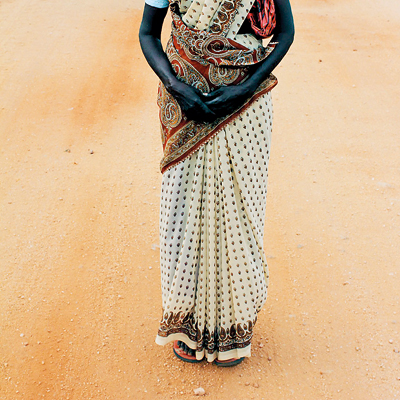The one that got away – Abdul Halik Azeez
Part of a generation that grew up during the war, with limited opportunities for travel around their own country, Abdul Halik Azeez began to blog a couple of years before the conflict ended, as an ‘exercising of agency, to interpret the world through my own perspective’.
The blogging led to a job at the Sunday Leader, and the spin-off photography – of semiotics, spirituality, the changing socio-economics of Colombo: subjects for which he did not think there was a ‘natural home’ – coincided neatly with the peace dividend and the emergence of Instagram. ‘I’ve always been interested in the microcosm that represented the macrocosm: close up details that represented the city, that spoke to a broader reality.’ By 2014 he had some 20,000 followers.
He refers modestly to the years in which he became known as a photographer and had a solo show at Saskia Fernando Gallery as ‘a side gig’. And from 2018 he began to move into more overtly artistic work with found photographs, mixed media, and writing. ‘Everything is photographed these days.’
He now works as a researcher and consultant, and documentary videographer. He is currently involved with a project for an NGO on the freelance digital media scene in Sri Lanka.
The one that got away
‘Recently I came into a bit of money, and I got myself a full-frame camera. And right after the lockdown, I was just randomly going to places and taking photos, and decided to go back to where I grew up as a child, near Panadura.
On the road, I saw this decrepit house. It was beautiful, in the sense of being fascinated by decay, you know. This old wall made out of kabok, and you could see the paint from decades ago showing up in certain spaces.
So I grabbed my camera, and I went in, and there’s this old man with an amputated leg, wearing a sarong but no shirt, sitting in his armchair in this darkened room. I think he lived alone, and he didn’t look in the best of health. But he was very welcoming, even if he didn’t really know why I wanted to take pictures of this old building which was falling apart.
But in the room there was this beautiful hand-painted image of a Buddha, which a friend had painted for him on a piece of metal sheet. It was a practical thing, for worship – but it looked like something someone in Colombo might pay Rs.50,000 for, and put on their wall. There was such a ‘nostalgic’ beauty in the scene that I just kind of lost myself. My brain just switched off. I don’t know what that is – maybe it’s native to all photographers – but I just started clicking away like crazy. Click, click, click, click, click. And I’m thinking, “These are great pictures!”
And then I walked back to my car… and found I hadn’t had the memory card in, that whole time. So I didn’t have those pictures after all.
Without that cosmic jolt, I think I was running the risk of an ethical violation: basically making ‘poverty porn’. I would’ve probably made prints if I had gotten them, because they would have been too beautiful to resist. And that ethical quandary is there in everything you do when you hold up a camera at a scene. There’s a power that comes with exercising that gaze that is never completely innocent.’
The shot that he got
‘There are some things that I haven’t resolved. Like this one photograph I took of a woman in a little village near Dambulla, in 2013, who was being evicted because there was a temple being expanded – done in a very illegal way, purely through the charisma of the priest, political goons, the Army mobilised as part of the ‘gentrification’ process.
It was a horrible situation. These were tea-estate Indian Tamils of questionable citizenship, very poor, mostly engaged in menial work. The locals had driven them away, demolishing their kovil and throwing the goddess statue down a well. And now they were living in makeshift dwellings.
I took this picture of the woman, without her face, and wrote this long caption asking why I should humanise her when the state and society in general has failed to acknowledge her. And I genuinely thought that I was spreading awareness of their plight.
But then this picture got a huge amount of traction, through Facebook and whatever, and it went to my gallery, and I sold a few copies of it – that beautiful sari, her gorgeous black skin (I’m just listening to the words that I’m saying!) – and now I’m thinking “Hmm. This picture’s probably hanging in someone’s house, without any caption to give it context…”
I’ve spoken to some of the people who’ve bought my photos and they’re genuinely interested in what went on around them. But it’s uneasy looking at the whole process, of which I am completely a part, and which I also benefit from, because my reputation is partly built on these ‘documentations’.
I don’t regret taking it. But it took me years to really think about it. Documenting people has become too synonymous with extractiveness, so I’ve consciously drifted away from that and towards happenstance within the symbolic landscape. It’s interesting that this urge still exists in me, though, no matter how much I’ve reflected on it.’

'un-captioned' by Abdul Halik Azeez


